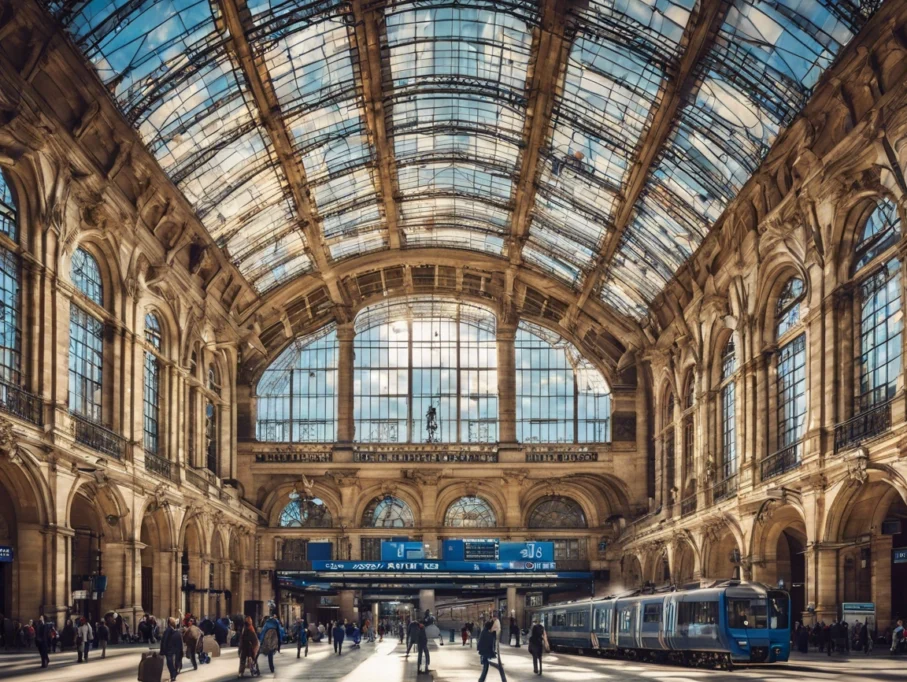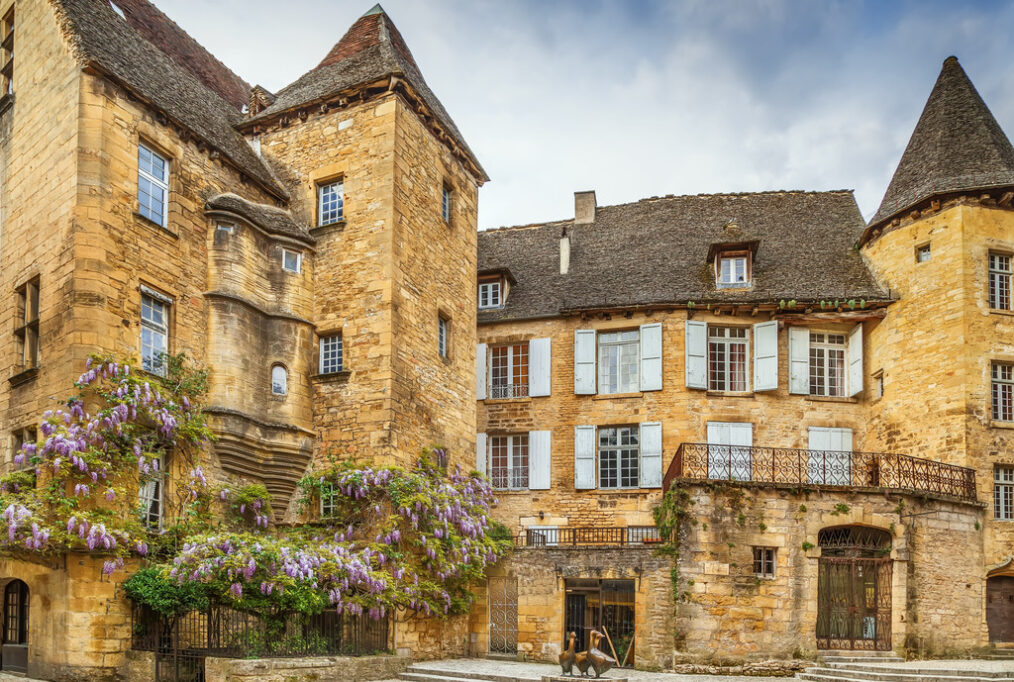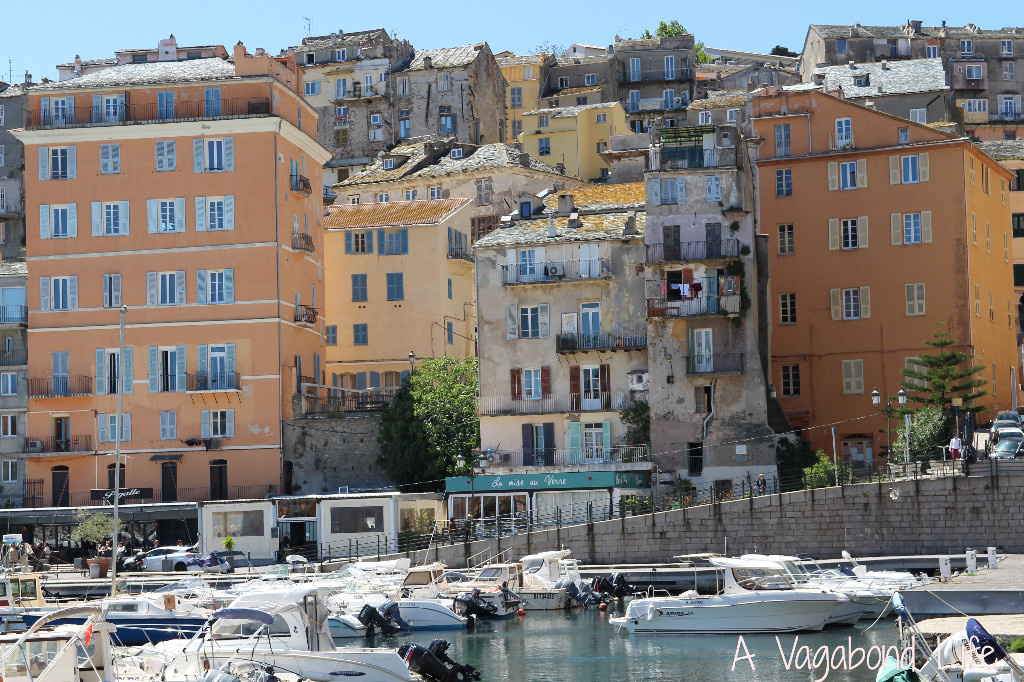Paris France Travel Guide A Vagabond Life
Embarking on a journey to Paris, France, is akin to stepping into a living canvas where history, culture, and modernity converge seamlessly. Revered as the “City of Light,” Paris captivates with its timeless allure and iconic landmarks, including the Eiffel Tower and Notre-Dame Cathedral.
Paris’s rich history dates back over two millennia, from its humble origins as a Roman settlement to becoming the capital of France and a global center for art, literature, and fashion.
Today, the city’s streets pulse with energy, offering an endless array of experiences for visitors. Art aficionados can lose themselves in the Louvre’s vast collections, while food lovers can savor the culinary delights of quaint bistros and Michelin-starred restaurants.
Whether wandering along the Seine’s picturesque banks or delving into the bohemian charm of Montmartre, traveling to Paris promises an enchanting voyage through history, culture, and the epitome of French elegance.
Map Paris France
Getting To Paris France
How to Get to Paris, France: A Comprehensive Guide
Paris, the City of Light, is a dream destination for many travelers around the globe. Known for its iconic landmarks, rich history, and vibrant culture, it’s a city that attracts millions of visitors each year. Whether you’re planning a romantic getaway, a cultural excursion, or a business trip, this guide will help you navigate the various ways to get to Paris, France.
By Air
Charles de Gaulle Airport (CDG)
Charles de Gaulle Airport, also known as Roissy Airport, is the largest and busiest airport in France. Located about 25 kilometers northeast of Paris, CDG handles most international flights.
- Direct Flights: Most major cities around the world offer direct flights to CDG.
- Transportation to the City: From CDG, you can take the RER B train, which connects directly to central Paris. Alternatively, taxis, shuttle services, and car rentals are available.
Orly Airport (ORY)
Orly Airport is located approximately 13 kilometers south of Paris and handles a mix of domestic and international flights.
- Direct Flights: Many European and North African cities have direct flights to ORY.
- Transportation to the City: Orlyval light rail connects to the RER B train, and there are also buses, taxis, and car rentals.
Beauvais-Tillé Airport (BVA)
Beauvais-Tillé Airport is a smaller airport located about 85 kilometers north of Paris, often used by budget airlines.
- Direct Flights: Mostly used for low-cost carriers flying within Europe.
- Transportation to the City: Shuttle buses connect BVA to Porte Maillot in Paris, taking about 1.5 hours.
By Train
Eurostar
The Eurostar high-speed train is a popular option for travelers from the UK. It connects London to Paris in just over 2 hours, arriving at Gare du Nord in central Paris.
TGV
France’s high-speed TGV trains connect Paris with major cities across France and Europe. Key routes include:
- Brussels to Paris: Approximately 1.5 hours.
- Amsterdam to Paris: About 3 hours.
- Frankfurt to Paris: Roughly 4 hours.
Other International Trains
Several other international train services connect Paris with neighboring countries, making it a convenient hub for European travel.
By Car
Driving to Paris can be a scenic option, especially for those traveling from nearby countries. Key routes include:
- From London: Driving via the Channel Tunnel and through northern France.
- From Brussels: A direct route via the A1 motorway.
- From Frankfurt: Via the A4 motorway.
Car Rentals
Renting a car is possible, but it’s important to note that Parisian traffic can be challenging, and parking is often scarce and expensive.
NOTE: France has has implemented several regulations and initiatives aimed at reducing vehicle emissions and promoting cleaner air. Stickers MUST be shown in many cities across France and fines apply if you do not have a sticker. See details here
By Bus
Several international bus companies, such as FlixBus, Eurolines, and BlaBlaBus, offer routes to Paris from various European cities. Buses typically arrive at major terminals like Porte Maillot, Gare de Bercy, or Gallieni.
Domestic buses are also available for those traveling within France. Companies like Ouibus provide connections from other French cities to Paris.
Getting Around Paris France
Thessaloniki, Greece’s vibrant second-largest city, offers an excellent blend of historical sites, bustling markets, and picturesque seaside promenades. Whether you’re visiting for a short stay or planning a longer exploration, understanding how to get around Thessaloniki is crucial for making the most of your trip. Here’s a comprehensive guide to navigating this dynamic city.
Public Transportation
1. Buses (OASTH): Thessaloniki’s public bus system, operated by OASTH, is the primary mode of public transportation in the city. The network is extensive, covering most areas, including the city center, suburbs, and nearby towns.
- Routes and Timetables: Buses run frequently, especially on popular routes through the city center. Schedules and route maps are available online and at major bus stops.
- Tickets: Tickets can be purchased at kiosks, OASTH ticket booths, and on the buses (exact change required). There are single-ride tickets, day passes, and multi-day passes available.
- Special Lines: The 01X and 01N lines connect Thessaloniki International Airport to the city center, offering convenient 24-hour service.
2. Thessaloniki Metro: Currently under construction, the Thessaloniki Metro is expected to greatly enhance the city’s public transportation network. Upon completion, it will provide fast and efficient transit across key areas of the city. Until then, buses remain the primary mode of public transport.
Taxis
1. Availability and Fares: Taxis are plentiful in Thessaloniki and can be hailed on the street, booked via phone, or reserved through various mobile apps. They are a convenient way to get around, especially for short distances or when carrying luggage.
- Fare Structure: Taxis in Thessaloniki are metered. Fares start with a base rate and increase based on distance traveled. Additional charges may apply for services such as airport trips or late-night rides.
- Tips: While tipping is not mandatory, it’s customary to round up the fare or leave a small tip for good service.
Car Rentals
1. Rental Services: Several international and local car rental companies operate in Thessaloniki, offering a wide range of vehicles to suit your needs. Renting a car provides flexibility, especially if you plan to explore areas outside the city.
- Requirements: To rent a car, you typically need a valid driver’s license, a credit card, and an international driving permit (IDP) if your license is not in Greek or English.
- Driving Tips: Thessaloniki’s city center can be congested, and parking can be challenging. Consider using parking garages or designated parking areas.
Biking and Walking
1. Biking: Thessaloniki is increasingly becoming a bike-friendly city, with dedicated bike lanes and rental services available.
- Bike Rentals: Bikes can be rented from various locations throughout the city. Some hotels also offer bike rentals to their guests.
- Bike Paths: Enjoy scenic rides along the waterfront promenade and through parks. Thessaloniki’s relatively flat terrain makes biking an enjoyable way to see the city.
2. Walking: Many of Thessaloniki’s attractions are within walking distance of each other, particularly in the city center.
- Walking Tours: Consider joining a guided walking tour to learn about the city’s history and discover hidden gems.
- Pedestrian Areas: Aristotelous Square, the waterfront, and the Upper Town (Ano Poli) are perfect for leisurely strolls.
Specialty Transport
1. Thessaloniki Waterbus: A unique way to see the city, the Thessaloniki Waterbus offers a scenic route along the Thermaic Gulf, connecting the city center with nearby coastal areas.
- Routes and Schedules: Waterbuses operate seasonally, typically from spring to autumn. Check schedules in advance as they may vary.
2. Funicular Railway: For a fun and scenic ride, take the funicular railway from the Lower Town up to the Upper Town (Ano Poli). This charming mode of transport provides great views over the city and is a convenient way to reach the historic district.
Conclusion
Navigating Thessaloniki is straightforward, thanks to its efficient public transportation system, plentiful taxis, and pedestrian-friendly areas. Whether you prefer the convenience of buses, the flexibility of a rental car, or the pleasure of walking and biking, Thessaloniki offers various options to suit your travel style. By understanding the best ways to get around, you can fully enjoy the rich history, vibrant culture, and stunning views that this Greek city has to offer.
Things To See And Do In Paris France
Eiffel Tower
The Eiffel Tower, an iconic symbol of Paris and France, was originally constructed as a temporary exhibit for the 1889 World’s Fair. Designed by Gustave Eiffel, its completion marked the centennial celebration of the French Revolution. Standing at 324 meters, it was the world’s tallest man-made structure until the completion of the Chrysler Building in New York in 1930. Initially met with skepticism and criticism from some of Paris’s leading artists and intellectuals, the tower quickly became a beloved landmark. Over the years, it has attracted millions of visitors from around the globe, eager to ascend its iron latticework for breathtaking views of the City of Lights. The Eiffel Tower’s integration into the cultural and architectural fabric of Paris underscores its transformation from a temporary exhibition to an enduring symbol of human ingenuity and architectural beauty.
How To Access The Eiffel Tower
To ascend to the top of the Eiffel Tower, visitors first need to obtain tickets, which can be purchased online in advance or at the ticket booths located on-site. Once tickets are secured, guests can opt for either the elevator or the stairs to reach the summit, depending on preference and fitness level.
Dining At The Eiffel Tower
To dine at the Eiffel Tower, reservations are essential. Several restaurants within the tower offer various dining experiences, from casual bistros to gourmet dining. Visitors can book tables in advance online or through reservation services. Upon arrival, guests can savor their meals while enjoying breathtaking views of Paris from this iconic landmark. View restaurants here
Notre Dame Cathedral
The Notre Dame Cathedral, a masterpiece of French Gothic architecture, has stood as an emblem of Paris for over 800 years. Construction began in 1163 and continued for nearly two centuries. Its soaring spires, intricate rose windows, and flying buttresses have inspired awe for generations. Tragically, a devastating fire in April 2019 ravaged its roof and spire, though much of the structure and priceless artifacts were saved. Restoration efforts have been underway since, with plans for the cathedral to reopen in the mid-2020s, aiming to restore its former glory as a testament to resilience and cultural heritage.
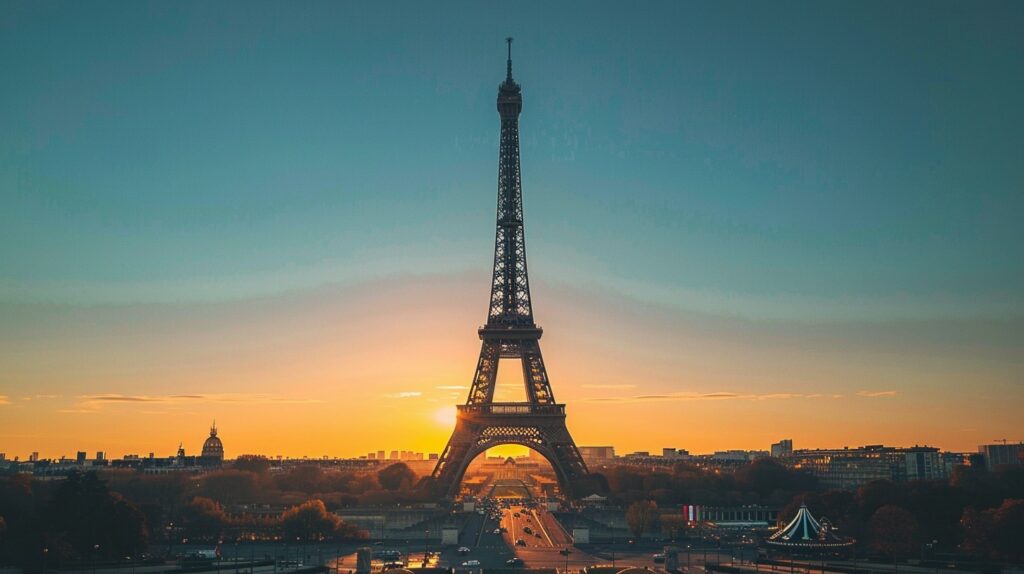
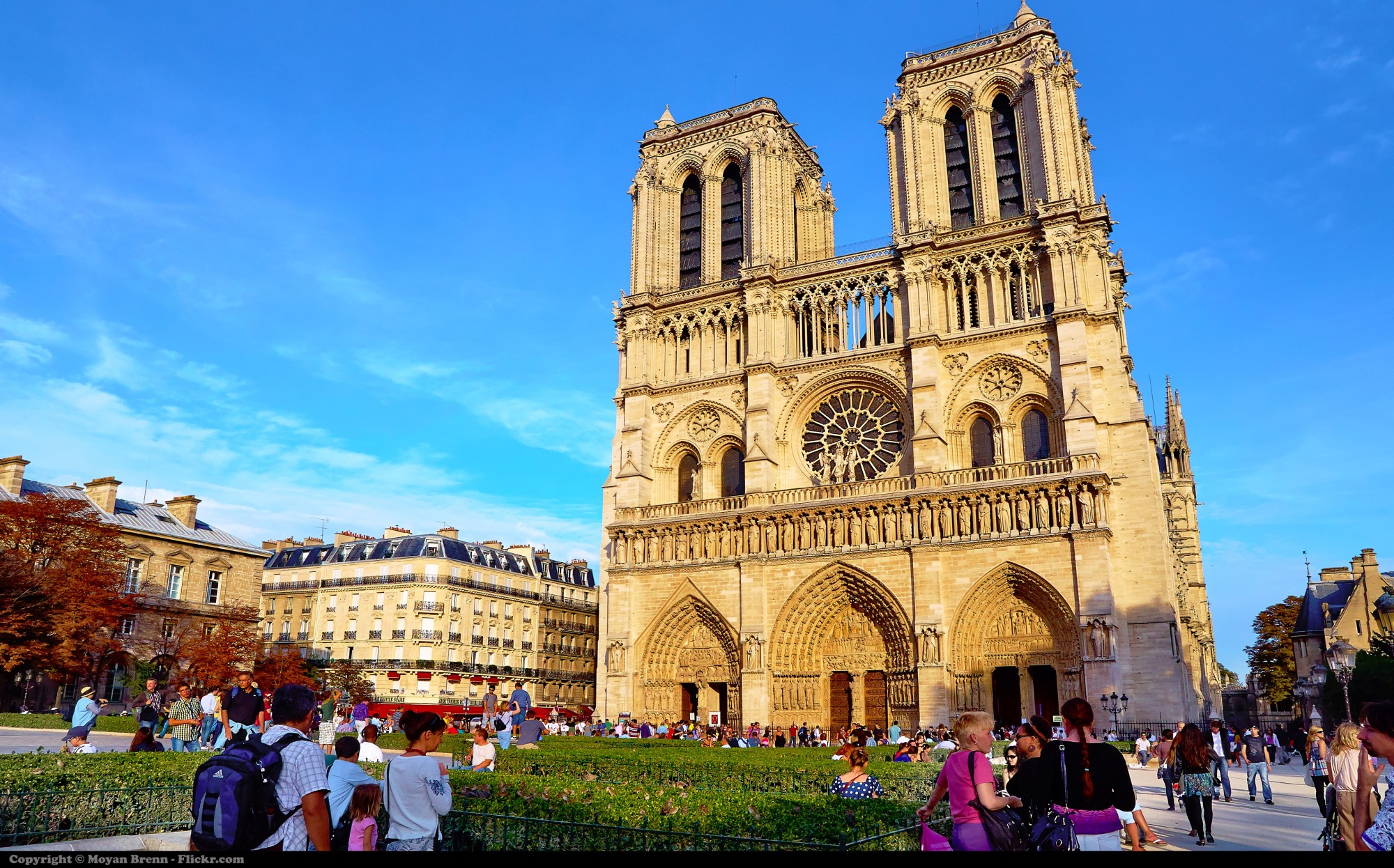
Avenue des Champs Elysees & Arc de Triomphe
Arguably the most famous street in the world the Champs Elysees extends 1.9 km from the Jardin de Tuileries to the Arc de Triomphe and includes the Place de la Concorde. Originally market gardens it was extended to the Tuileries by Marie de Medici in 1616 and then transformed by André Le Nôtre in 1667 by order of Louis XIV. By the late 18th century the avenue had become very fashionable. The avenue has been the scene of a number of historic military marches the most notable being the infamous march of German troops celebrating the Fall of France of on 14 June 1940, and the two most famous were the marches of Free French and American forces after the liberation of the city in August 1944.
The Arc de Triomphe
The Arc de Triomphe sits at the western end of the Champs Elysees and honours those who fought and died for France in the French Revolutionary and the Napoleonic Wars, with the names of all French victories and generals inscribed on its inner and outer surfaces. Beneath its vault lies the Tomb of the Unknown Soldier from World War I. It was commissioned in 1806 after the victory at Austerlitz by Napoleon at the peak of his power and completed in 1836. The arch stands 164 feet tall and the viewing platform can be accessed via an underground passage and then 284 steps or a lift.
The Louvre Palace
The Louvre Palace sits on the Right Bank of the Seine and was once a royal palace. The building dates back to medieval times, its present structure has evolved in stages since the 16th century. It was the seat government in France until it was moved to Versailles by Louis XIV in 1682. The Louvre remained the formal seat of government until the end of the Ancien Régime in 1789. Since then it has housed the Musée du Louvre which has a collection of over 1 million works of art, of which about 35 000 are on display, spread out over three wings. The museum has a diverse collection ranging from the Antiquity up to the mid 19th century. Some of the most famous works of art in the museum are the Venus of Milo, the Nike of Samothrake, the Dying Slave by Michelangelo and, Leonardo da Vinci’s Mona Lisa.
How To Buy Tickets To The Louvre Paris
To visit the Louvre Museum, it’s highly recommended to purchase tickets in advance to avoid long lines and ensure entry, especially during peak tourist seasons. Tickets can be easily obtained through the following steps:
Online Purchase: Visit the official Louvre Museum website to buy tickets. This is the most straightforward method, allowing you to select a specific date and time slot for your visit.
Official Ticket Outlets: Some tourists prefer buying tickets from official ticket outlets or tourist information centers in Paris. These locations can provide physical tickets without the need for an online purchase.
Paris Museum Pass: For those planning to visit multiple attractions, the Paris Museum Pass might offer a better value. It includes entry to the Louvre and many other museums and monuments in Paris, allowing for a more flexible itinerary.
Remember, tickets purchased directly from the Louvre’s official website or official vendors ensure you’re paying the correct price and avoiding potential scams. Always check the museum’s official website for the latest information on ticket prices, opening hours, and any visitor requirements.
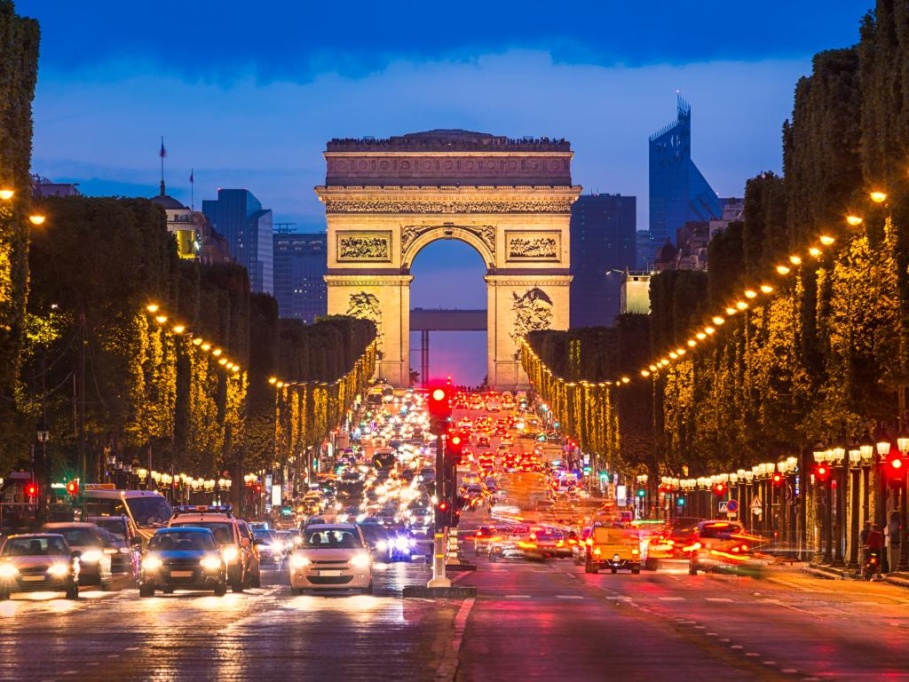
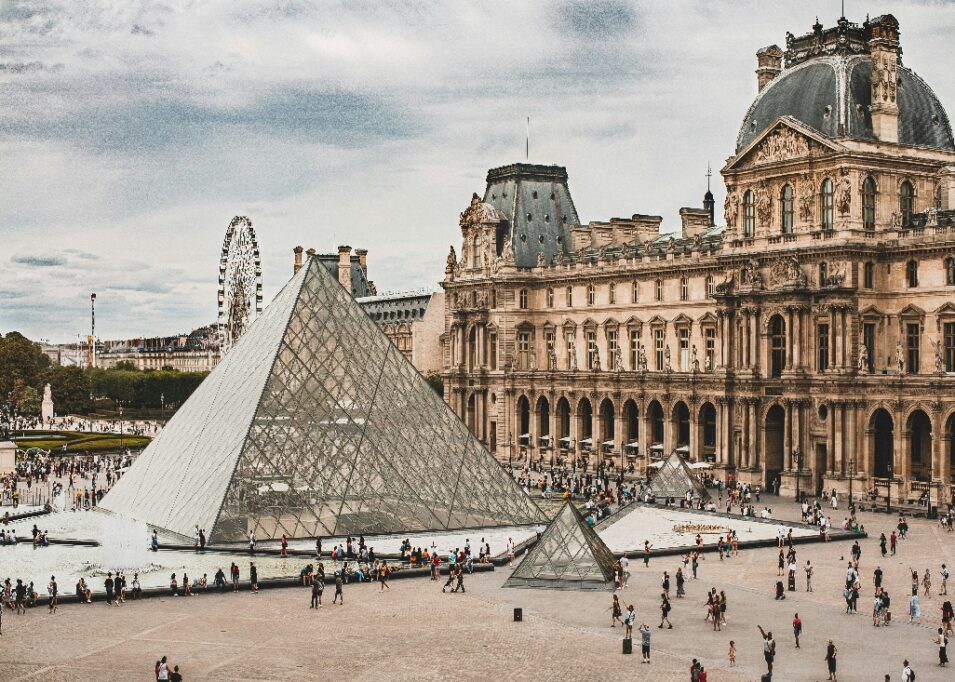
Basilica du Sacre-Coeur de Montmartre
Basilica du Sacre-Coeur de Montmartre Sacre-Coeur, as it is commonly known is a stunning church and minor basilica that sits high on a hill in Montemarte over looking the city of Paris. Dedicated to Sacred Heart of Jesus this lovely church is both a political and cultural monument. The Sacré-Cœur Basilica was designed by Paul Abadie. Construction began in 1875 and was finished in 1914. It was consecrated after the end of World War I in 1919. Climb the 300 steps to the Dome for an even better view. While visiting Sacre-Coeur take some time to wander through the winding streets of Montmarte, an ancient part of France that has long attracted artists and has a number or quaint houses and many restaurants.
How To Get To Basilica Sacre – Coeur de Monmarte
To reach the Basilica of the Sacred Heart of Paris (Basilique du Sacré-Cœur de Montmartre) in Paris, France, you have several transportation options:
Metro: Take Line 2 (blue line) and get off at the Anvers station. From there, it’s a short walk uphill to reach the basilica. Alternatively, you can take Line 12 (green line) and get off at the Abbesses station, though this requires navigating stairs or a steep hill.
Bus: Several bus lines serve Montmartre. Buses 30, 54, and 85 stop near the base of the hill, while bus 80 stops closer to the top. Check the bus routes and schedules to find the most convenient option.
Funicular: For a scenic ride up the hill, you can take the Montmartre funicular from the base of the hill near the Anvers metro station. This option saves you from climbing the steep stairs or hill.
Once you arrive in the vicinity of Montmartre, follow signs or ask locals for directions to the basilica. It’s situated atop a hill, offering panoramic views of Paris, making it a landmark that’s both spiritually and visually captivating.
Luxembourg Gardens
Luxembourg Gardens is situated on the border between Saint-Germain-des-Prés and the Latin Quarter, the Luxembourg Gardens, inspired by the Boboli Gardens in Florence, were created upon the initiative of Queen Marie de Medici in 1612. The gardens, which cover 25 hectares of land, are split into French gardens and English gardens. Between the two, lies a geometric forest and a large pond. There is also an orchard with a variety of old and forgotten apples, an apiary for you to learn about bee-keeping and greenhouses with a collection of breathtaking orchids and a rose garden. The garden has 106 statues spread throughout the park, the monumental Medici fountain, the Orangerie and the Pavillon Davioud. There are many activities and facilities for children such as puppets, rides and slides. Adults, whether they are Parisians or tourists, can play chess, tennis, and bridge or remote control boats.
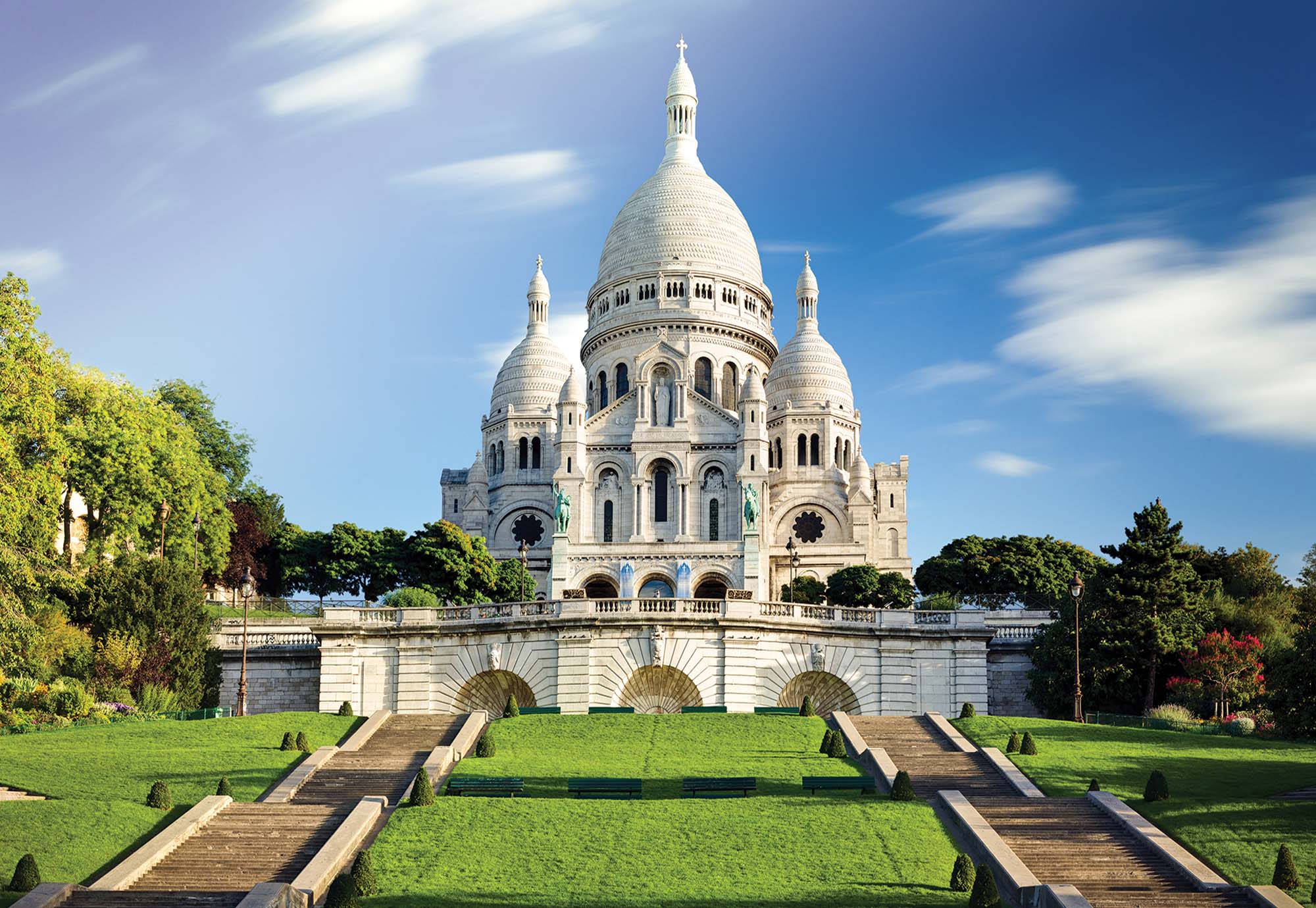
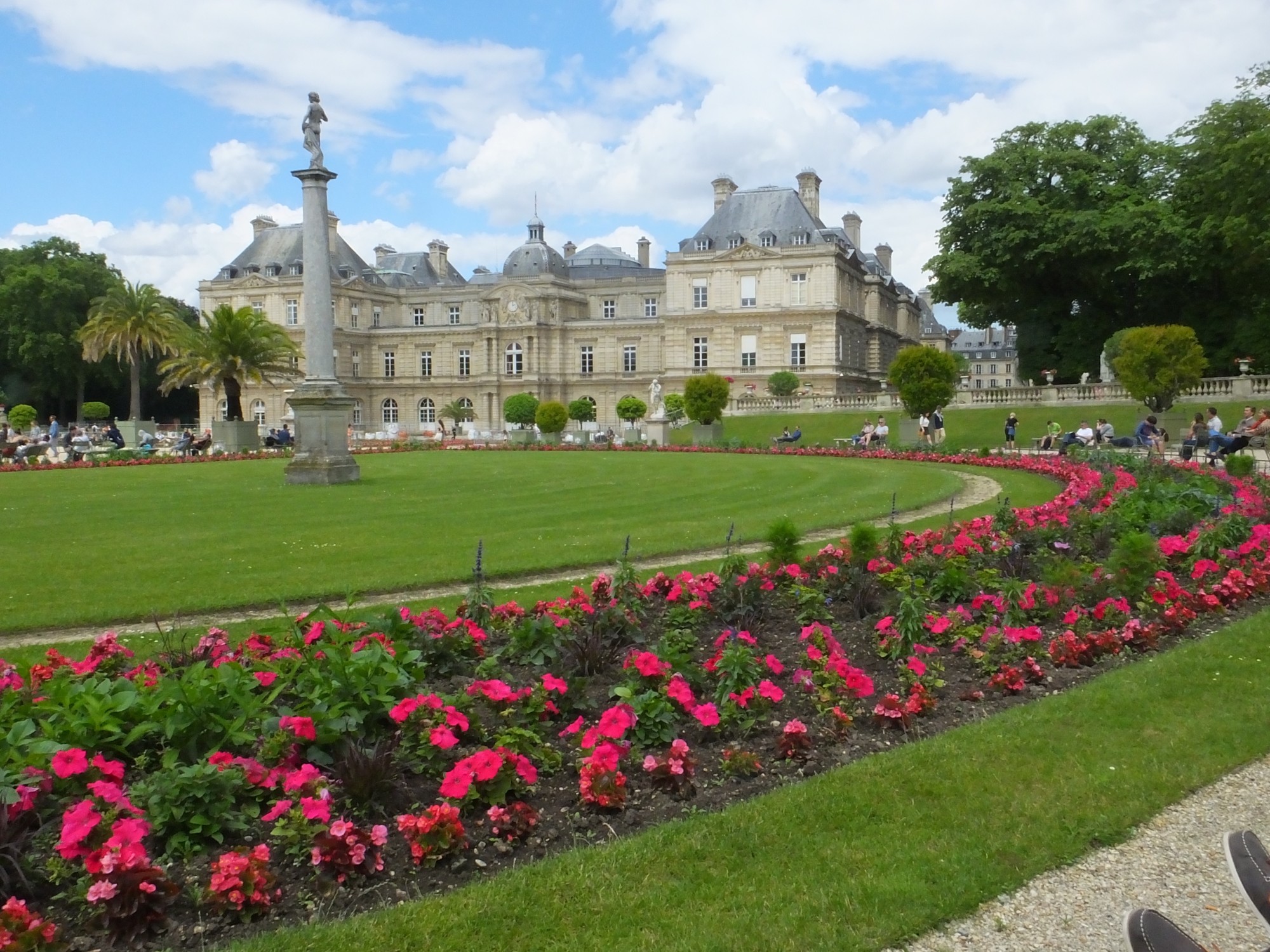
Things To See & Do Outside Paris France
The Palace of Versaille
The Palace of Versaille is a stunning palace surrounded by formal gardens 20 kms from Paris. Originally built as a hunting lodge by Louis XIII Versaille it was expanded by Louis XIV to become one of the largest palaces in the world. The royal court and government was moved here in 1862. Louis XV and XVI continued to expand and develop the buildings and grounds which included the gardens. When abandoned by the royal family during the French Revolution the much of the furniture and art was sold by the government with only items of artistic of intellectual significance being spared. Versailles is now a museum of major importance in France and one of the most visited tourist destinations in France.
How To Buy Tickets To The Palace of Versailles Paris
Getting tickets to the Palace of Versailles, located just outside Paris, is straightforward and can be done in several ways to ensure a smooth visit to this historic royal residence.
- Online Purchase: The most convenient method is to buy your tickets online through the official Palace of Versailles website. This allows you to select a specific date and time slot for your visit, helping to avoid long lines. You can choose from different types of tickets, including the Passport ticket which grants access to the palace, the gardens, and other estates like Trianon and Marie Antoinette’s village, depending on the day.
- On-site Purchase: While you can buy tickets on arrival at the Palace of Versailles, it’s less recommended due to potential wait times, especially during peak tourist seasons. If you choose this option, arrive early to purchase your ticket from the ticket office.
- Paris Museum Pass: For those planning to explore multiple attractions, the Paris Museum Pass might offer good value. It includes entry to the Palace of Versailles and many other museums and monuments in and around Paris. Note, however, that access to the gardens during Musical Fountain Shows or Musical Gardens events requires an additional fee, even for pass holders.
- Tour Operators: If you prefer a guided experience or need transportation from Paris, many tour operators offer packages that include skip-the-line access to Versailles and round-trip transport.
Remember, visiting the Palace of Versailles requires a bit of planning, especially during high season. Booking your ticket in advance, choosing the right ticket type for your interests, and considering your transport options will make for a smoother and more enjoyable visit.
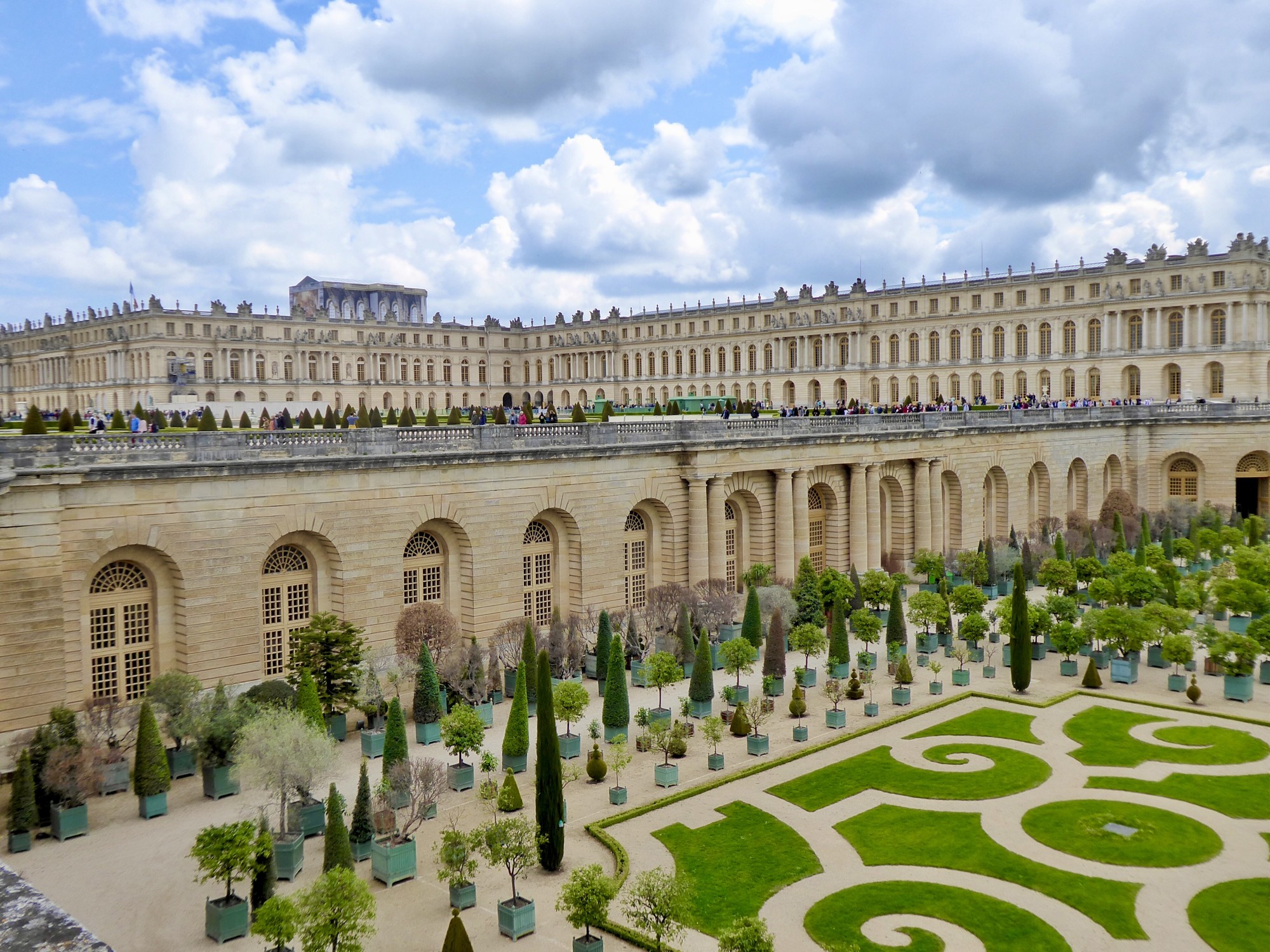
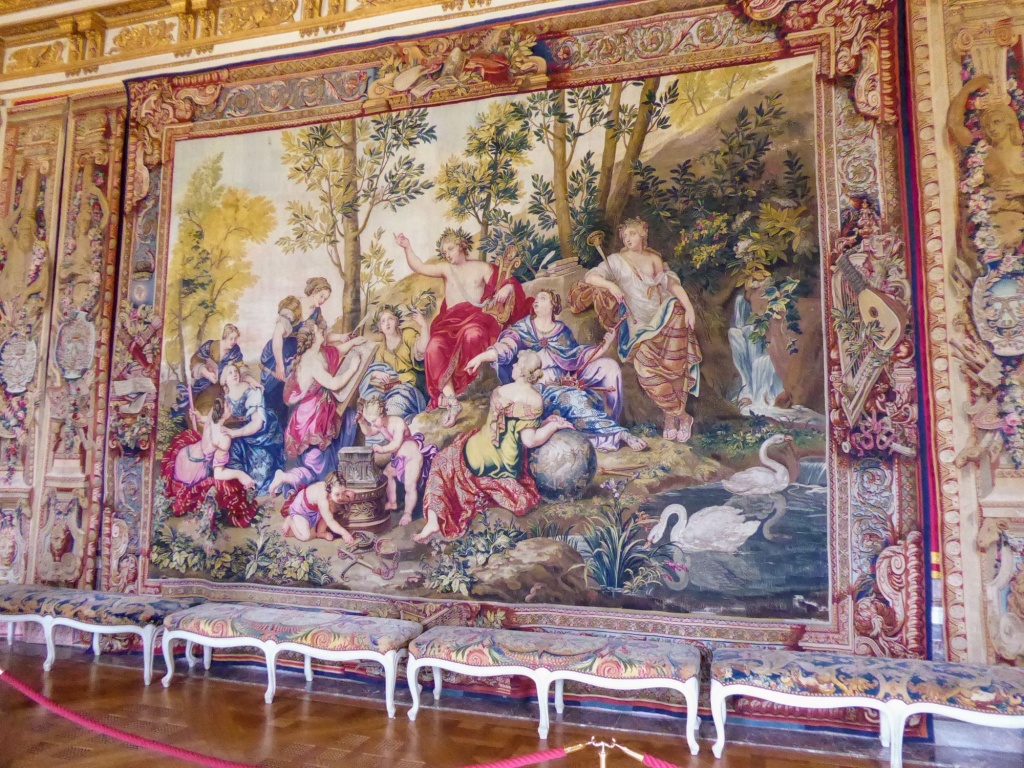
Monets Garden
Monet’s Garden, located in Giverny, France, is a stunning and iconic destination for art lovers, gardeners, and anyone who appreciates natural beauty. Claude Monet, the renowned Impressionist painter, lived in Giverny from 1883 until his death in 1926, and it was here that he created the gardens that would inspire some of his most famous works.
The Clos Normand is the flower garden situated in front of Monet’s house. This garden is a vibrant tapestry of colors and textures, carefully designed to create a living canvas. Monet arranged the flowers by color, creating harmonious compositions that change with the seasons. You’ll find roses, tulips, peonies, and a variety of other flowers blooming throughout the year. The garden’s pathways are lined with trellises and arches covered in climbing roses and other plants, creating a lush and immersive environment. The Clos Normand is a testament to Monet’s love of color and his desire to create beauty not just on canvas but in the world around him.
The Water Garden is perhaps the most famous part of Monet’s Garden, as it served as the inspiration for his series of Water Lilies paintings. This part of the garden was influenced by Japanese aesthetics, a style Monet admired greatly. The Japanese bridge, draped with wisteria, is one of the garden’s most iconic features. The pond is filled with water lilies that bloom in the summer, creating a serene and reflective atmosphere. The way the light plays on the water and the interplay of colors and reflections are mesmerizing, offering visitors a glimpse into the scenes that captivated Monet and inspired his work. Strolling through the Water Garden, visitors can see firsthand how Monet’s surroundings were directly reflected in his art.
The house where Monet lived and worked is as much a part of the experience as the gardens themselves. The home is a charming pink building with green shutters, filled with the artist’s personal possessions, including furniture, prints, and his collection of Japanese woodblock prints. The interior has been carefully preserved to reflect Monet’s life and tastes. The dining room is painted in bright yellow, a color Monet loved, and the kitchen is adorned with blue tiles and copper cookware. The studio, where Monet worked on his large canvases, is now a gallery displaying reproductions of his paintings. Walking through Monet’s house, visitors can gain a deeper understanding of his daily life and the environment that shaped his artistic vision.
Monet’s Garden is open from April to November, with each season offering a different experience. Spring brings an explosion of tulips and irises, summer is when the water lilies are in full bloom, and autumn offers a rich palette of dahlias and chrysanthemums. To avoid crowds, it’s best to visit early in the morning or late in the afternoon. The garden’s beauty varies throughout the day as the light changes, so photographers may want to visit during the golden hours of sunrise or sunset. Each visit to Monet’s Garden is a unique experience, offering a new perspective on the relationship between art and nature.
Monet’s Garden is located about 80 kilometers (50 miles) from Paris, making it an easy day trip. Visitors can take a train from Paris to Vernon, which takes about 45 minutes. From Vernon, it’s a short bus or taxi ride to Giverny. For those who prefer a more leisurely journey, cycling from Vernon to Giverny along the scenic country roads is also a popular option. Several tour companies offer guided day trips from Paris, which often include visits to other nearby attractions.
Monet’s Garden is not just a beautiful place; it’s a living work of art that continues to inspire visitors from around the world. Whether you’re an art enthusiast, a gardener, or simply someone who loves nature, a visit to Monet’s Garden is a journey into the heart of Impressionism and the creative spirit of one of history’s greatest painters.
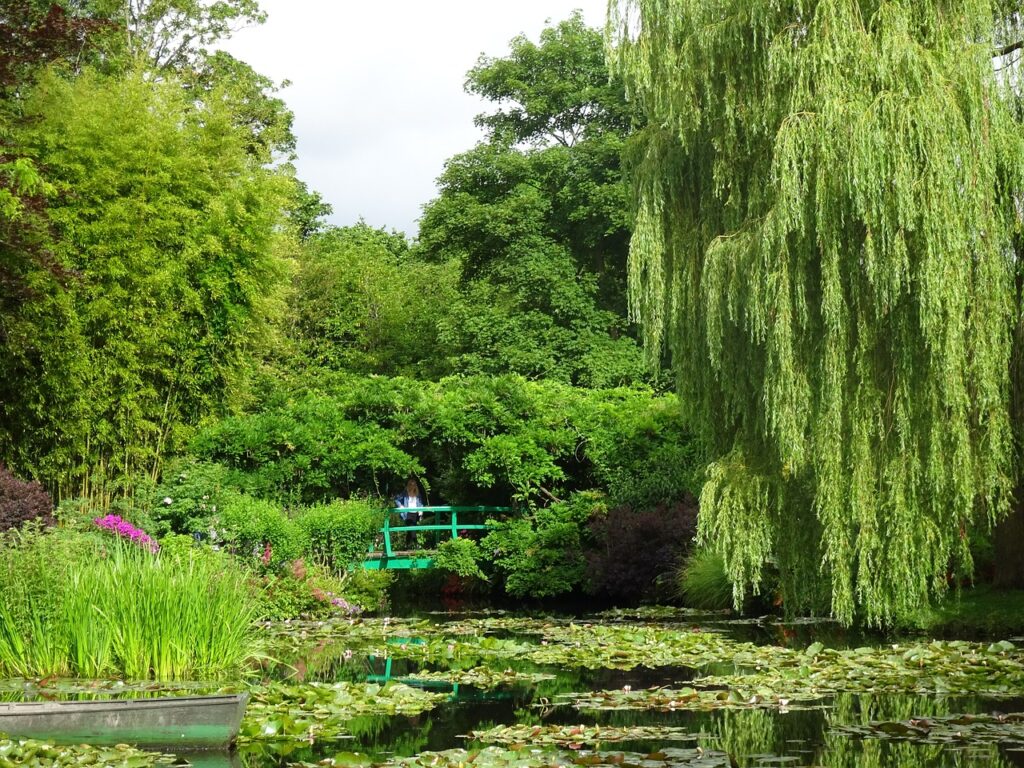
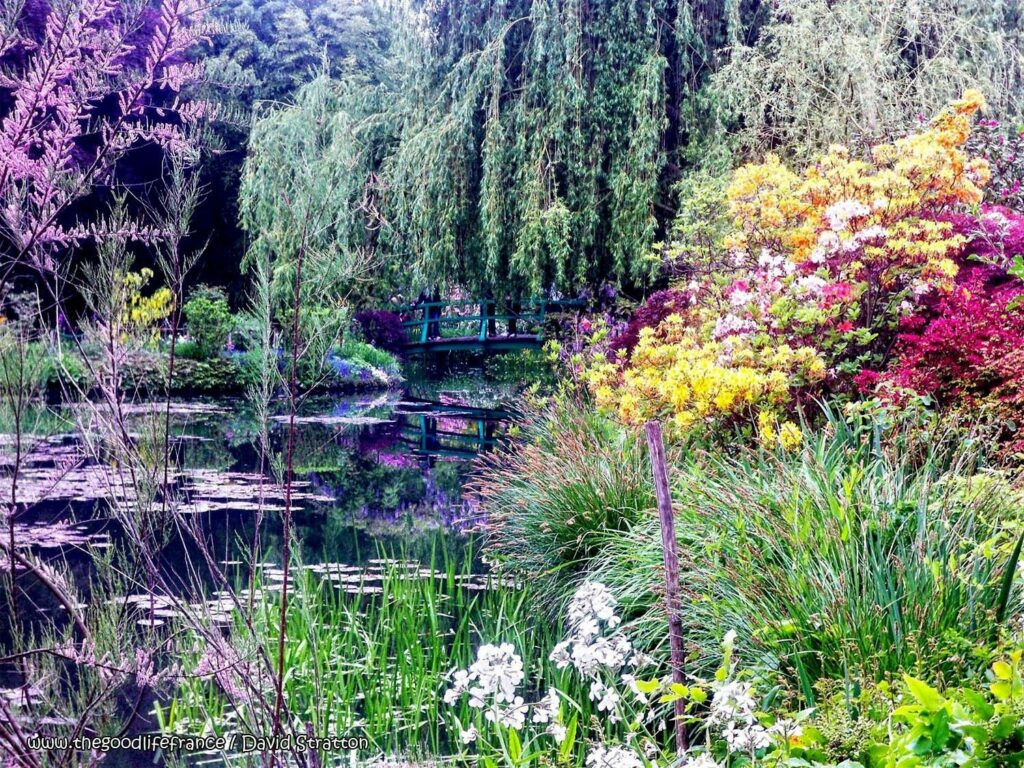
France Travel Guides
Regions of France Travel Guides
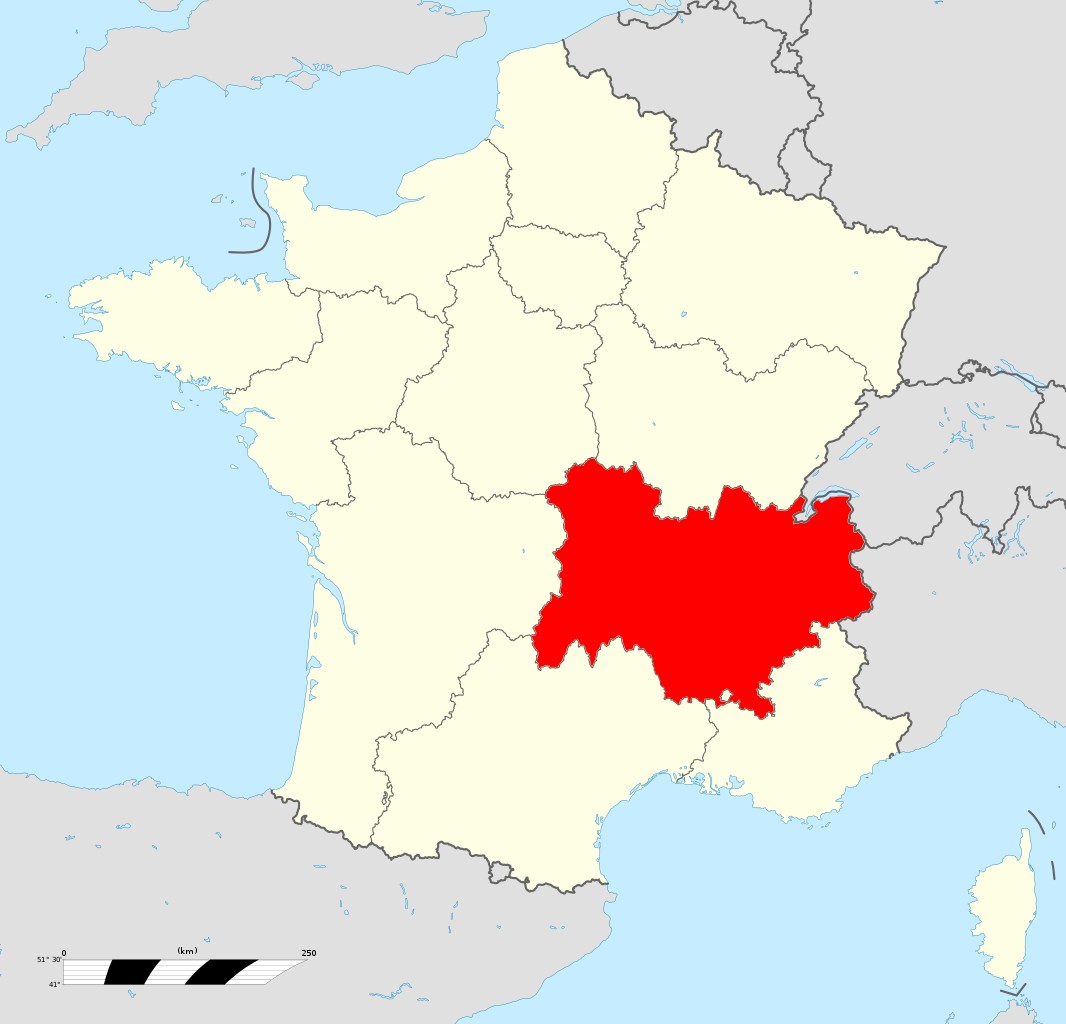
Auvergne-Rhone-Alps
Auvergne-Rhone-Alps Travel Guide.
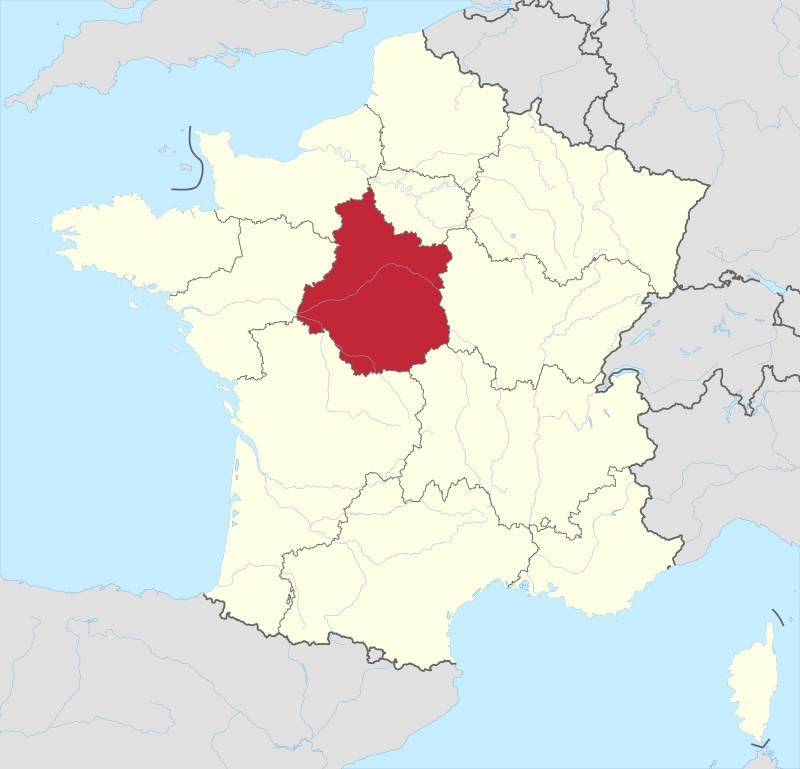
Centre Val De Loire
Centre-Val-de-Loire Travel Guide.
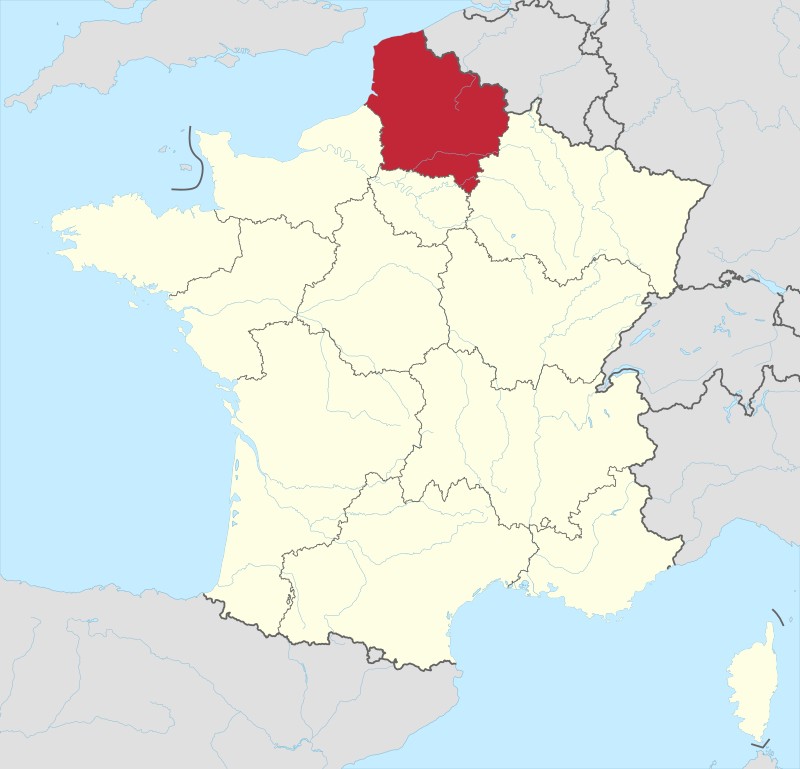
Haute – de – France
Haute-de-France Travel Guide.
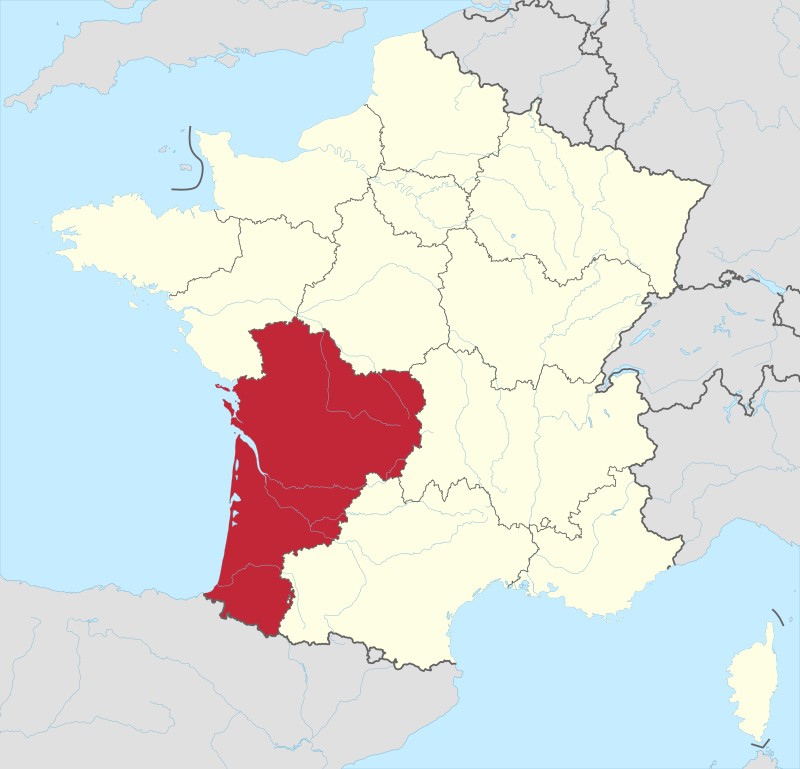
Nouvelle – Aquitaine
Nouvelle – Aquitaine Travel Guide.

Provence-Alps_Cote D'Azur
Provence Travel Guide.
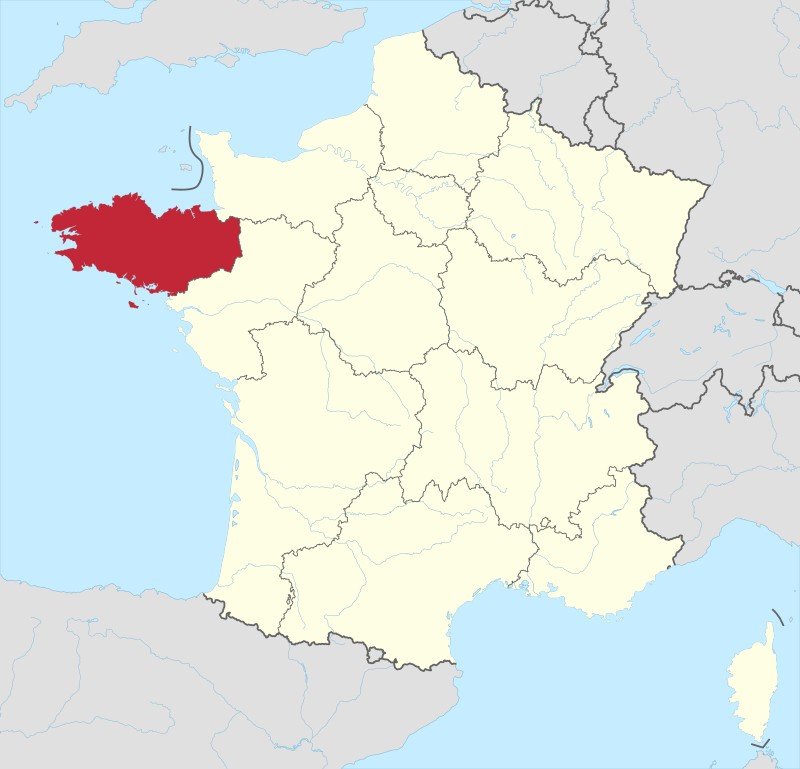
Brittany
Brittany (Bretagne) Travel Guide.
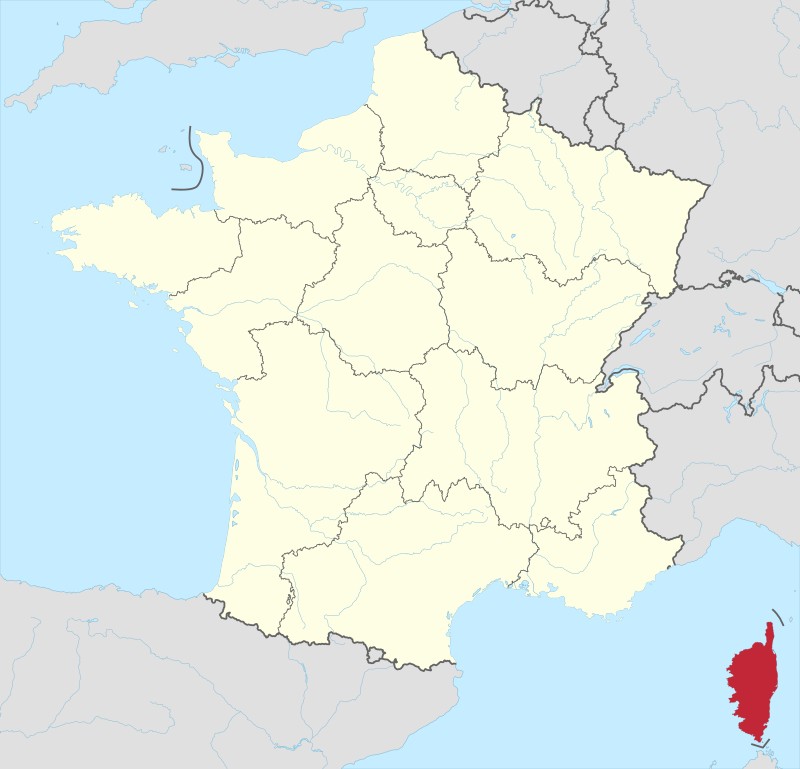
Corsica
Corsica Travel Guide.
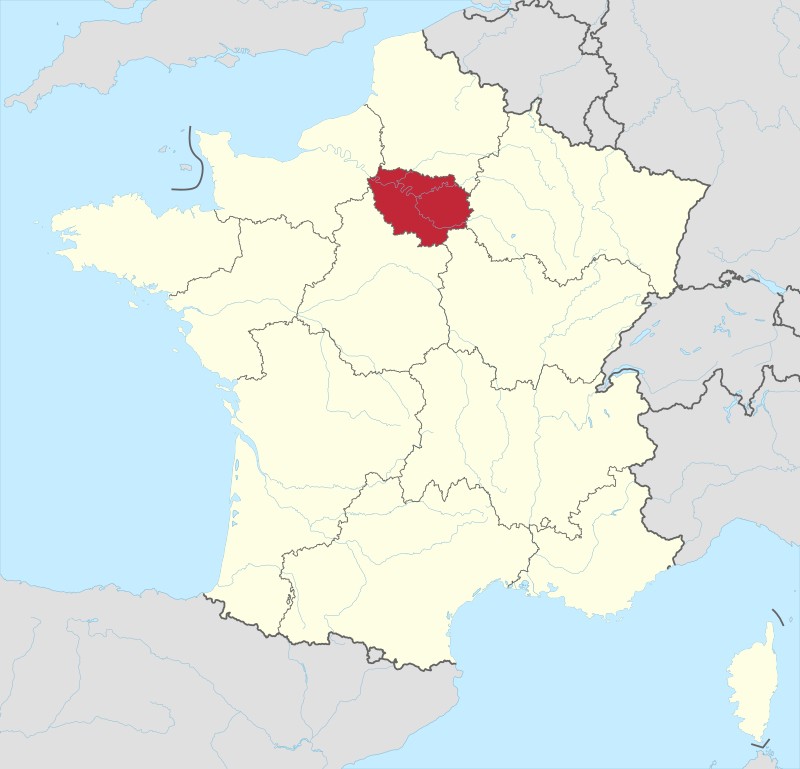
Ile – de – France
Ile – de – France Travel Guide.

Occitane
Occitane Travel Guide.

Bourgogne-Franche-Comté
Bourgogne-Franche-Comté Travel Guide.
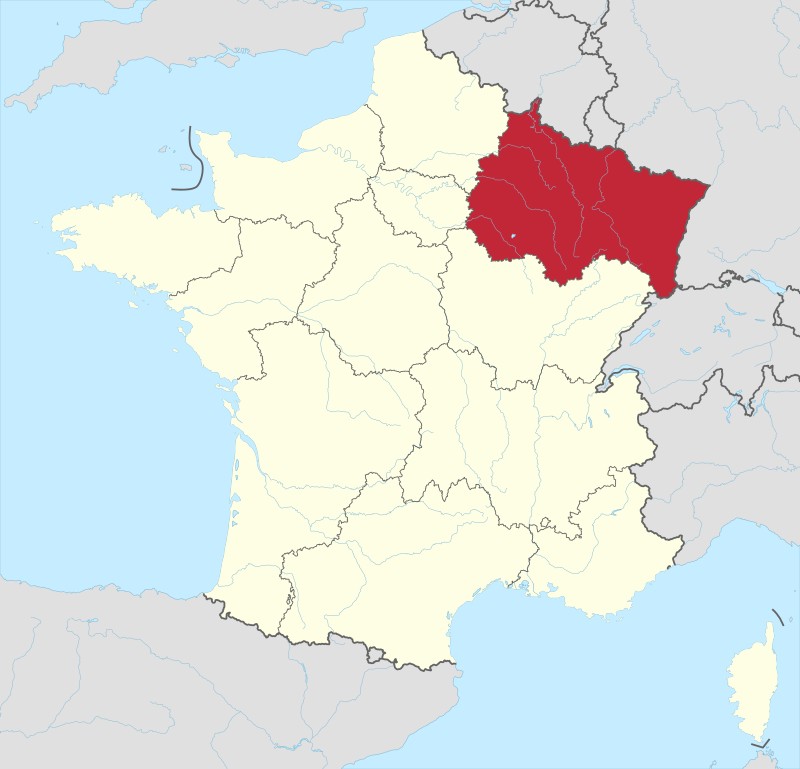
Grand Est
Grand-Est Travel Guide.
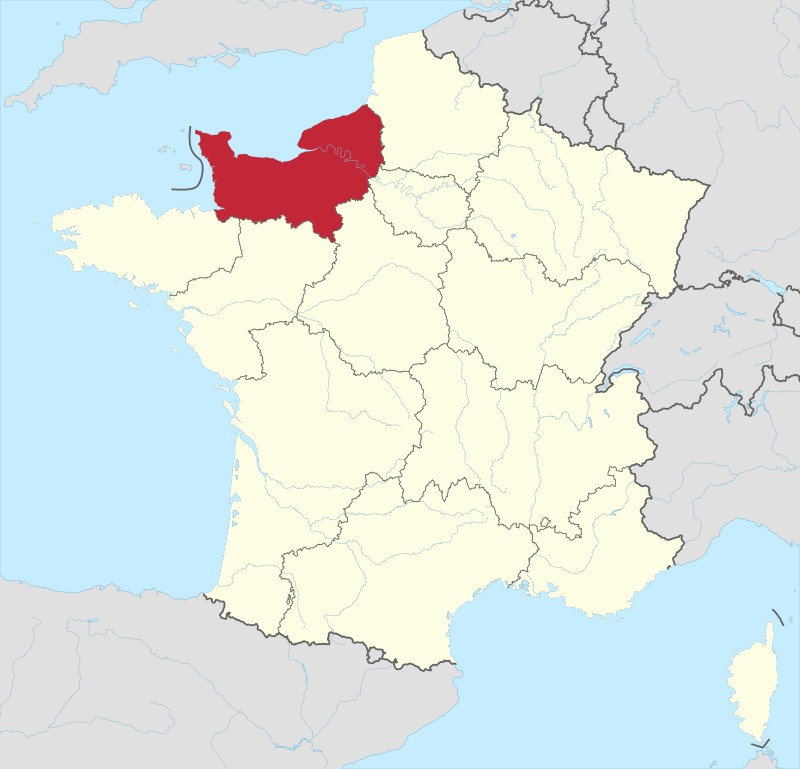
Normandy
Normandy Travel Guide.

Pays-de-la-Loire
Pays-de-la-Loire Travel Guide.

